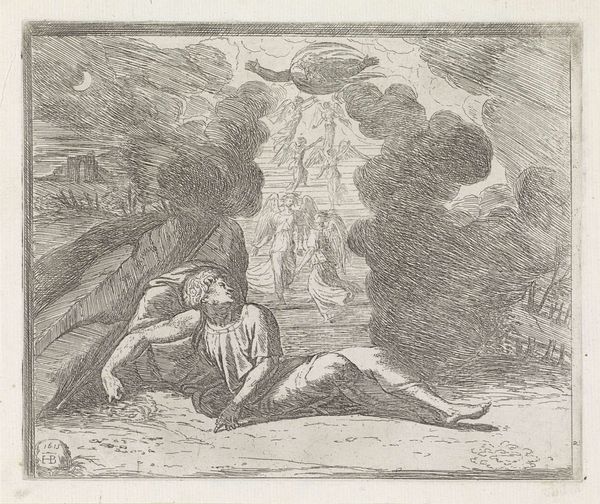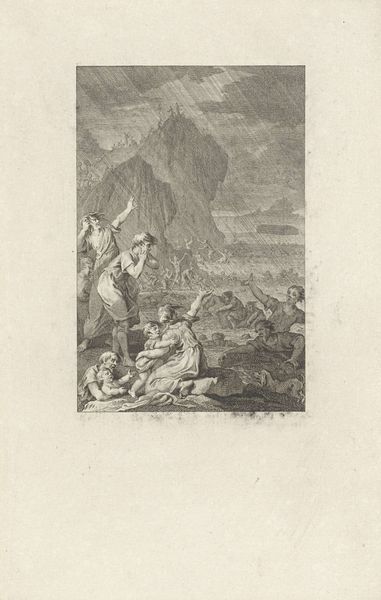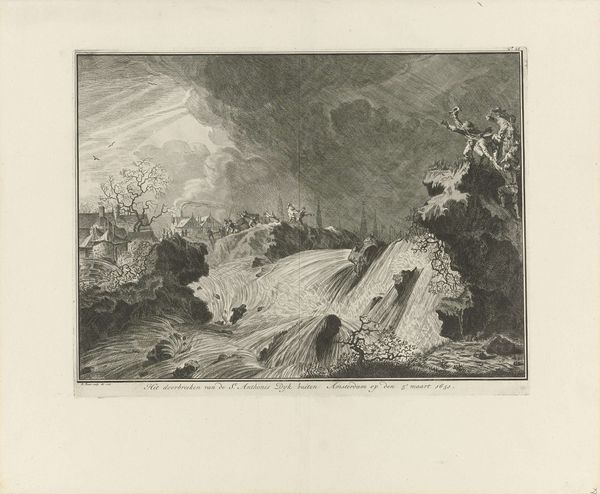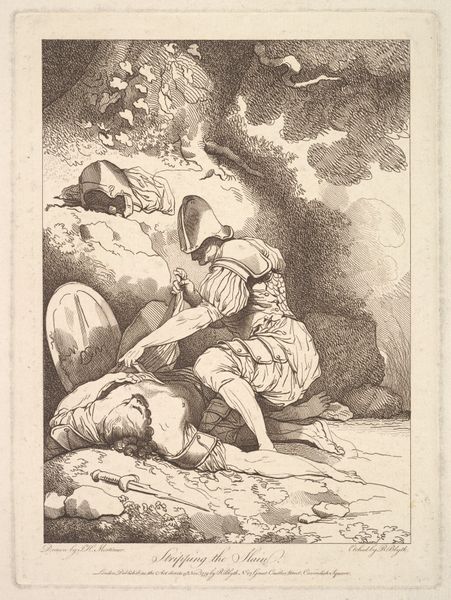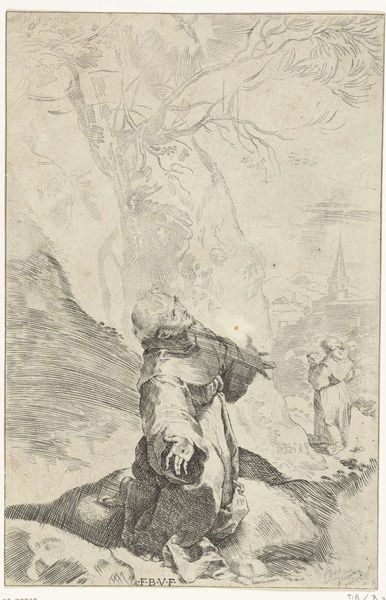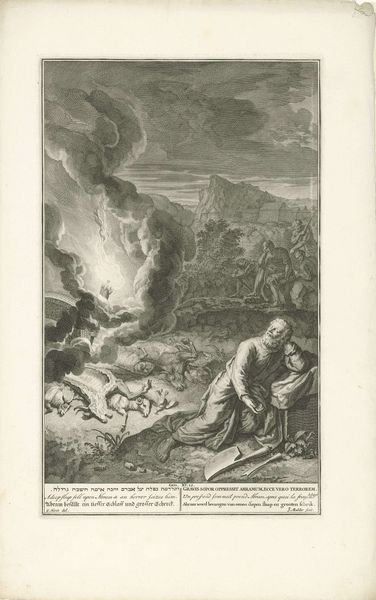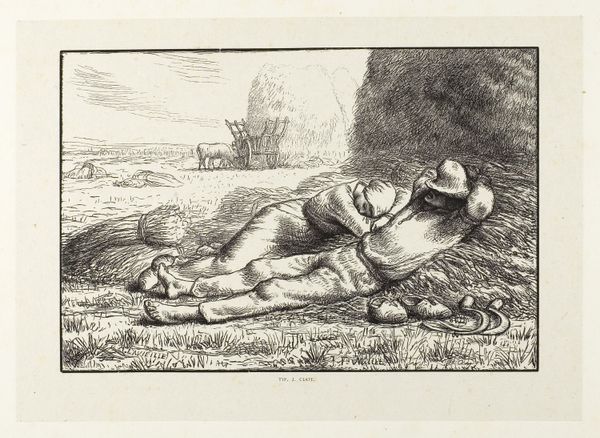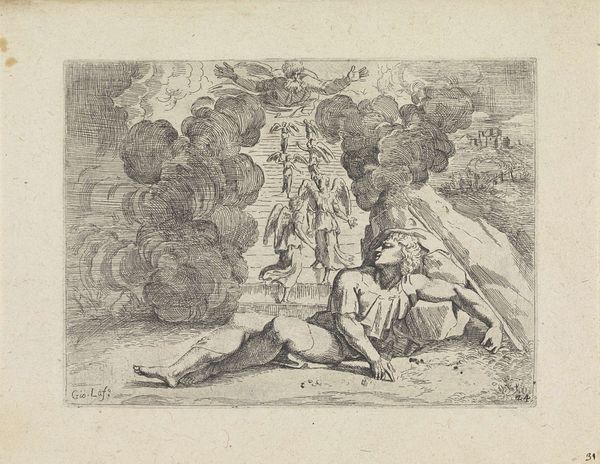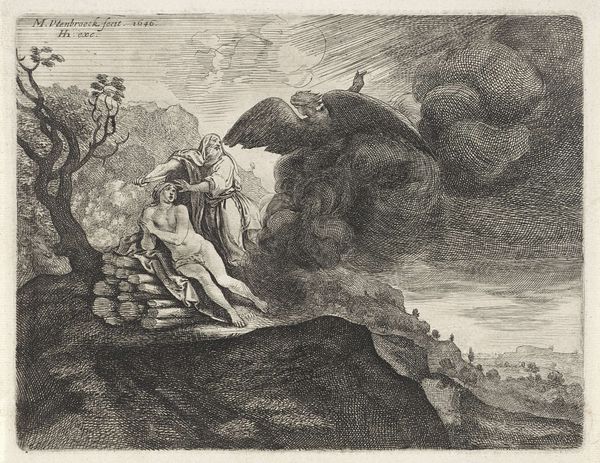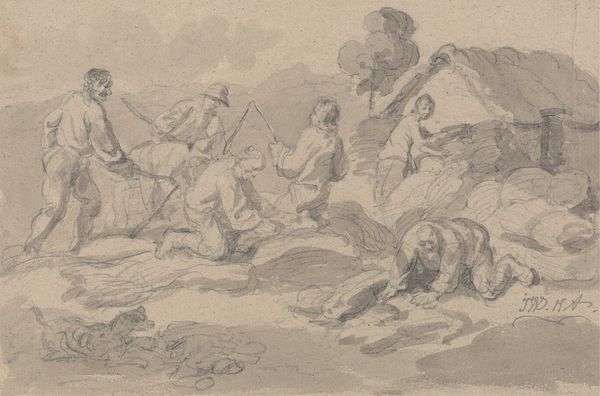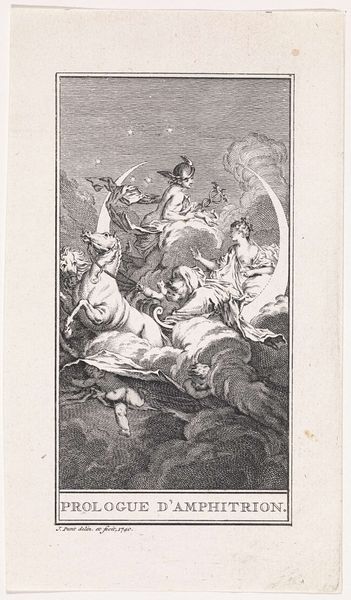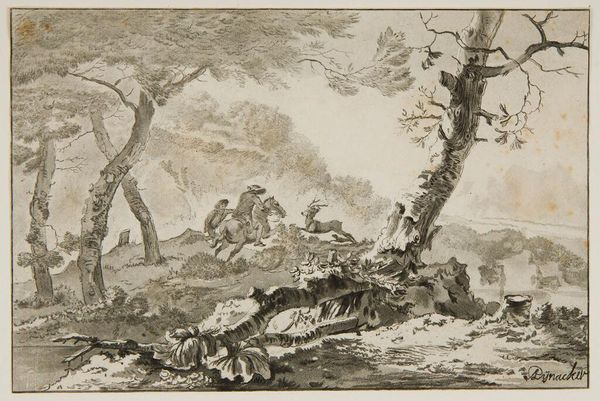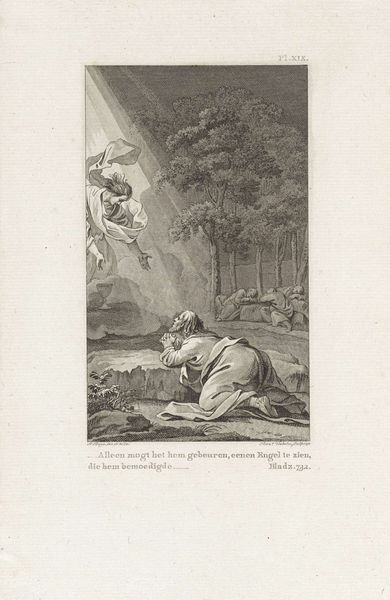
drawing, etching
#
drawing
#
narrative-art
#
baroque
#
etching
#
landscape
#
figuration
Dimensions: height 136 mm, width 152 mm
Copyright: Rijks Museum: Open Domain
Curator: Look at this etching, "Jacob's Ladder" by Rembrandt van Rijn, made sometime between 1616 and 1719. The interplay of light and shadow immediately draws me in. Editor: It evokes such a strong sense of isolation and divine intervention all at once. This solitary figure amidst a landscape literally touched by the heavens - how does Rembrandt leverage the symbolism of verticality here, contrasting the reclining Jacob with the towering vision? Curator: He does it through dramatic contrast. Notice the ground's textured etching and compare it with those luminous, unearthly rays of light descending from the sky. That sharp distinction pulls the eye upwards, enacting a spiritual ascent on the viewer. The strong verticals are enhanced by his skillful application of crosshatching that provides tonal and formal strength. Editor: Absolutely. The way that light floods from the top corner - what does that mean for us? The angels aren’t equally distributed or explicitly shown, so does their concealment reveal the potential for salvation and danger to be deeply embedded into systems of faith and patriarchal expectations? This could reference personal journeys, with Jacob as representative. Curator: The landscape surrounding Jacob certainly grounds him, both visually and narratively, yet this technique elevates the divine aspect, visually disrupting his earthly domain with otherworldly light and forms. It accentuates this sense of Jacob straddling two worlds - the real and the transcendental. The crosshatching technique, a hallmark of baroque art, adds depth. Editor: Given Rembrandt's own lived experience, are we able to expand beyond pure aesthetic appreciation? For me, it’s tempting to situate this in the lineage of depictions of vulnerable bodies encountering manifestations of the divine. Curator: Ultimately, it invites contemplation on the nature of dreams, faith, and the complex relationship between humanity and divinity. A compelling exploration of spiritual awakening through purely visual means. Editor: A testament to the capacity for rendering theological ideas into tangible material culture; it serves as both document and portal, inviting those to not simply witness but perhaps also partake in transformative dreaming practices.
Comments
No comments
Be the first to comment and join the conversation on the ultimate creative platform.
